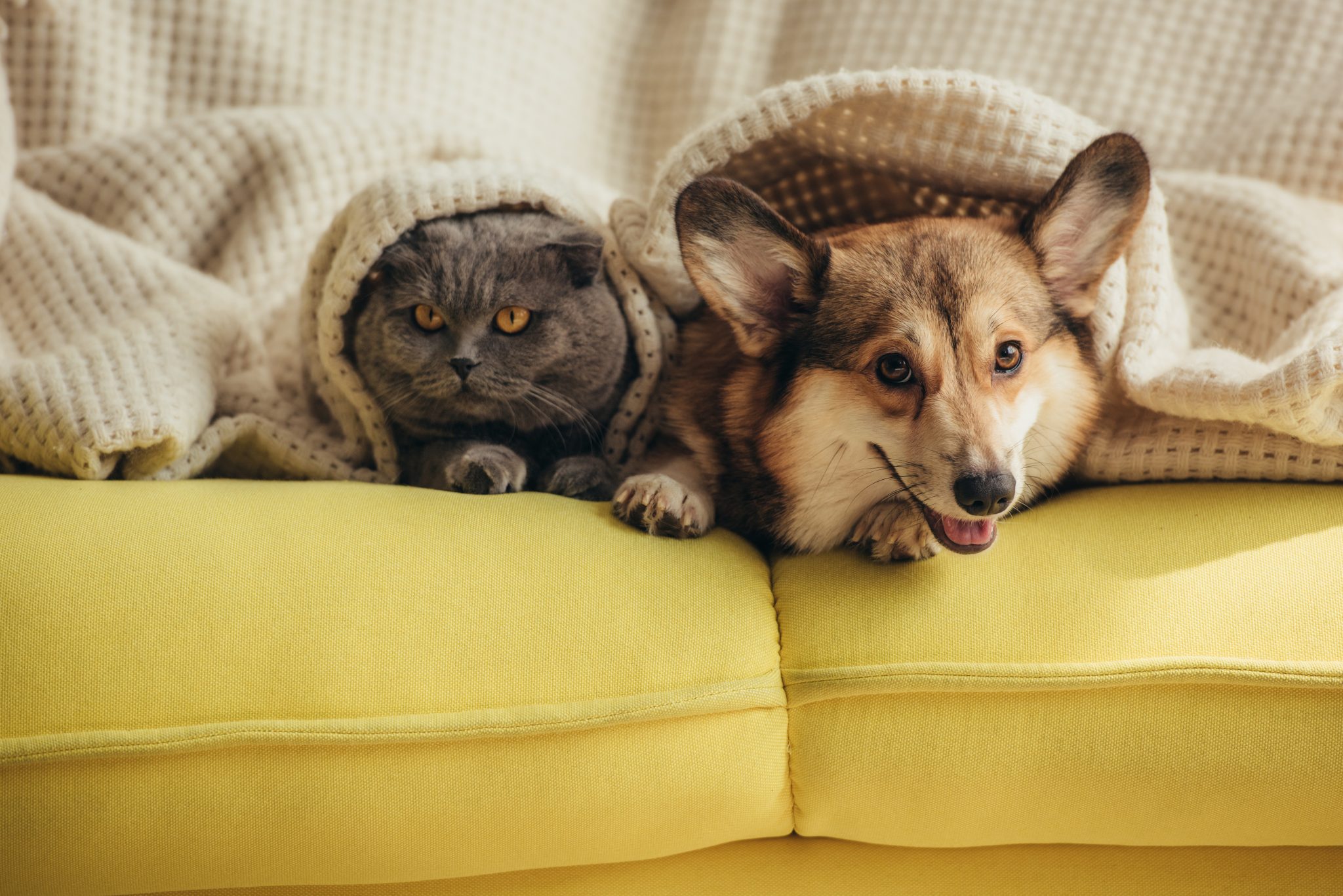Whether they have fins, feathers, fur or scales, Americans love their pets. In fact, two out of every three homes have some kind of pet, with dogs and cats topping the charts by clear margins. You’d think, then, that selling your home when you have pets wouldn’t be so hard. After all, the vast majority of prospective buyers have pets, too.
So, What’s the Problem?
Well, buyers want to envision themselves (and their own pets) living in your space, not you and your pets. Staging your home so that it’s attractive to prospective buyers means minimizing whatever might distract people from the home’s features — including sights, sounds and smells. Plus, a third of your potential buyers don’t have pets, and you don’t want to turn off that much of your market by not taking their sensibilities into account.
Selling a home isn’t always easy to do when you have pets, but we have some tips that can help.
Repair All Visible Signs of Pet-Related Damage
When you live with pets, you learn to turn a blind eye to the scuff marks where they rub against the wall, the scratches around the door frame and the occasional stain on the carpet — but your prospective buyers won’t. Visible signs of pet damage can make your buyers wonder how well you’ve cared for the property and wonder about hidden problems — and that can make them head for the door.
Before you list your home, carefully look around for signs of pet damage and take corrective action like:
- Repainting walls or floorboards that your pets have scuffed over time
- Repairing scratches around wood door frames, window ledges and floors
- Replace any carpets with permanent stains
- Remove furniture that shows signs of claw marks or teeth
If your pets go outside, you also need to tend to any damage in your yard they may have caused. Make sure that fences are in good repair (replace chewed boards and paint or stain over scratches), fill any holes that your dog may have dug, clean up droppings from the birds you feed and — by all means — pay attention to how your yard smells.
If the odor of cat urine or dog waste tends to waft up from your yard on a warm day, make sure you thoroughly clean up the yard and wash down any hard surfaces, like your deck or patio, with soap and water. Invest in an enzyme-based cleaner from your local hardware or pet store and use it to totally break down any lingering odors.
Minimize All Other Traces of Your Pets
You have to do a deep clean on your home and stage it before you sell it, anyhow, but pet owners need to go through a few extra steps to eliminate the signs (and smells) of pets in the home. Fur, drool and that musky smell that can come from different animals can be an instant turn-off for a lot of buyers.
You may not even be conscious of the odor of your pets, so don’t trust your own nose to tell you if there’s a problem. Instead:
- Have the carpets and furniture textiles professionally cleaned
- Change the filters in your HVAC system
- Wash drapes and other window treatments
- Wash throw pillows, blankets and throw rugs
It’s also time to box up or hide the vast majority of pillows, stuffies, bones or pet toys that may be lying around. Anything that isn’t absolutely essential needs to be tucked away until the house is sold.
Similarly, you also need to make sure that you leave any areas that the pets have to use as scrupulously clean as possible before showings. Food dishes and water bowls should be sparkling clean and on mats to protect the floor. If you don’t already have one, invest in a covered litter box with a charcoal filter (and give it a quick clean before every showing). Tanks and cages need to be in good repair and showroom clean.
Decide How to Handle Your Pets During Showings
You basically have three options when it comes to your pets during this time — but none of them are likely to sound (or feel) ideal. You can:
- Board your pets while the house is up for sale. One drawback to this plan is that commercial boarding can get expensive. Another is that you’re separated from your pets, so even if you’re lucky enough to have a friend or relative who will take your critters for the duration, you will miss them (and they will miss you).
- Crate your pets during showings. If you have a bird or fish, this might not be a problem, but your cats or dogs definitely won’t be happy about this solution. While this might be your only option in a pinch, it could leave prospective buyers listening to unhappy whining or agitated barking while they’re trying to look around.
- Take your pets with you. This means herding the cat into a carrier and the dog into the car every time you have a showing to get them out of the way, which can be a lot to manage if you’re pressed for time. Plus, you have to stay on top of any new messes they make or damage to your recent repairs.
Only you can decide which method works best for you. However, there is one thing you can’t do: Leave your pets to roam free or locked in a room when buyers are about to visit.
Some of your potential buyers may be afraid of animals, and all of them want to get an unrestricted look at your house — including the laundry room or basement where you might otherwise lock away your pets. You also don’t want to run the risk that one of your visitors will get scratched or bitten, nor do you want your pets to accidentally get out.
Selling a home when you have pets does involve a little extra work, but it’ll all be worth it when you make that successful deal.



